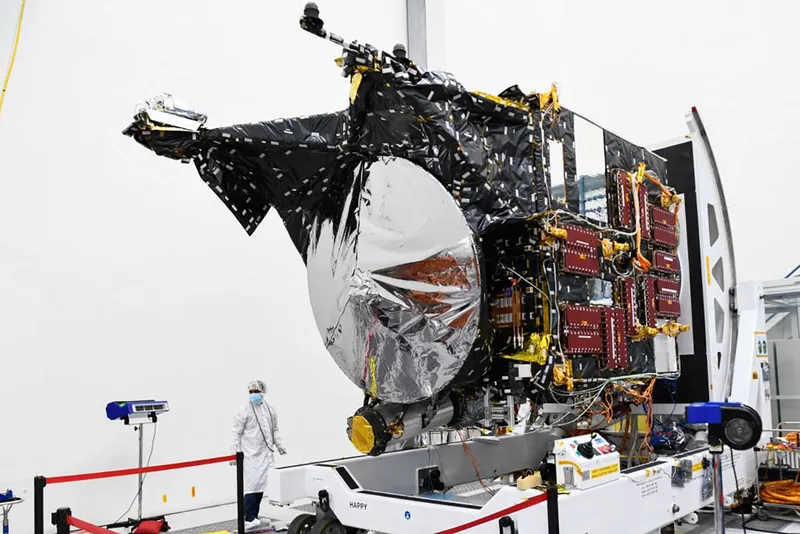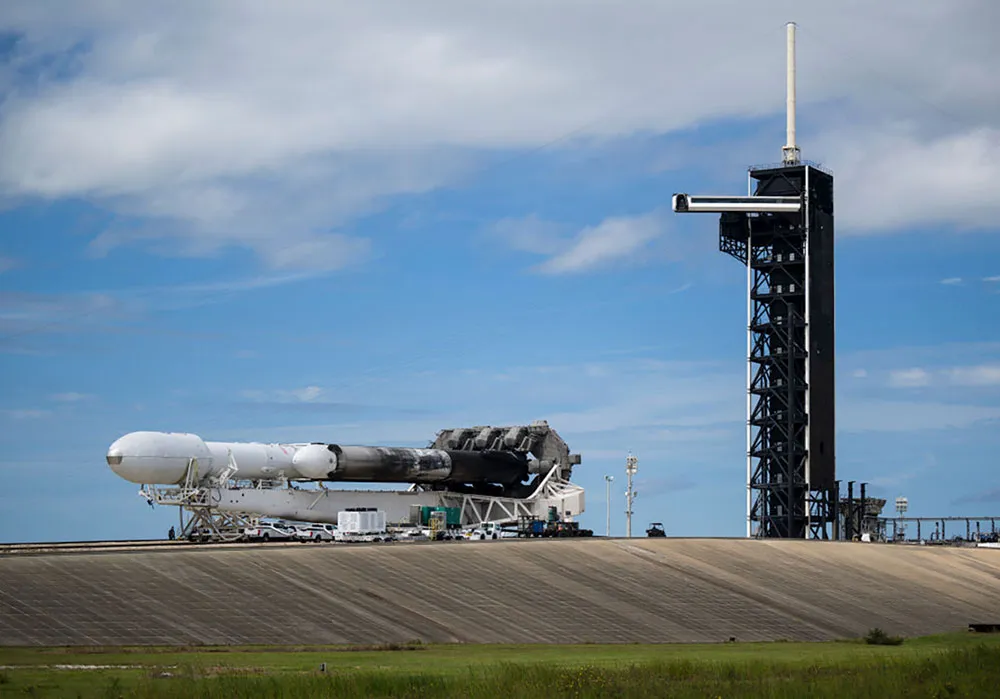After a significant delay in 2022, today NASA is gearing up for the launch of the Psyche asteroid spacecraft, the space agency's first mission to study a metal-rich asteroid in-depth.
This certainly won’t be a quick there-and-back mission through space. The Psyche spacecraft will have to travel an estimated 2.2 billion miles to reach the asteroid in question (which is also named Psyche), with an expected arrival in 2029.
But what is so special about the asteroid? When will the Psyche spacecraft launch? And can you watch live as it happens? We’ve answered all of these key questions (and much more) below.
NASA's Psyche mission launch date
The Psyche asteroid mission is scheduled to launch at 10:16am EDT (3:16pm UK time) on Thursday, October 12, 2023. The launch will occur at NASA’s Kennedy Space Center in Florida, where the spacecraft will be attached to a SpaceX Falcon Heavy rocket.
Originally, NASA’s Psyche was going to launch in October 2022. However, due to a late delivery of the spacecraft’s flight software and testing equipment, this date was postponed.
How to watch the launch live
Like most of NASA’s major launches, the event will be available to watch live as it happens. The Psyche launch will be streamed via both NASA TV (see below) – a constant live stream of NASA content – as well as on the SpaceX official YouTube channel.
What are the Psyche mission goals?
The asteroid’s physical characteristics and orbital parameters are not fully known. To ensure the mission’s safety and success, the spacecraft will move through a series of progressively lower orbits during its scientific operations, building a better understanding of the asteroid in the process:
- Orbit A: The first phase of orbits will be used to detect the asteroid’s magnetic field and model its gravity field, in order to plan the spacecraft’s lower orbits. This will take place in the first 56 days of the mission.
- Orbit B: Psyche’s second phase of orbits will have the best lighting conditions in order to create a topographical map of the metal-rich asteroid. This will take place over an 80-day period.
- Orbit C: The third phase of orbits offers the best opportunity to conduct gravity science. The Psyche spacecraft will also continue magnetic field observations. This will take place over a period of approximately 100 days.
- Orbit D: Finally, as the spacecraft reaches the closest phase of orbits, it will begin investigations into the chemical composition of the asteroid. Again, this will be a longer period of testing, taking roughly 100 days.
In total, the Psyche space will complete 1256 orbits of the asteroid.
Read more:
What is the Psyche craft?

First approved for flight by NASA in 2017, with construction completed in 2021, Psyche consists of a body attached to two solar arrays and is about the size of a tennis court.
The spacecraft contains a number of innovative tools to help scientists better understand its namesake asteroid.
- Multispectral imager. Two cameras with a variety of filters and lenses will document the asteroid in order to understand its composition and provide a topographical map of its surface. This is known as the Multispectral imager.
- Spectrometer. A gamma-ray and neutron spectrometer will measure the asteroid’s elemental composition to help explain its formation and how it changed over time.
- Magnetometer. This consists of two high-sensitivity sensors that will try to detect and measure the remains of an ancient magnetic field, which could reveal insights into the asteroid’s origins.
- Telecommunications tech. These systems will be used to send commands to the spacecraft from Earth. This system will measure changes in radio waves to determine the asteroid’s rotation, wobble, mass and gravity field.
In total, the spacecraft is 24m (81ft) in length, and 7m (24ft) in width.
What makes the Psyche asteroid so special?
The Psyche asteroid was first discovered way back in 1852 by the astronomer Annibale de Gasparis. The 16th asteroid to ever be discovered, it was nicknamed the 16th Psyche.
Scientists believe that Psyche may contain significant amounts of metal from the core of a planetesimal – one of the building blocks of our solar system.
There remain some contradictions in the data, but it is believed that Psyche is likely made of a mixture of rock and metal, with metal composing 30 to 60 per cent of its volume.
Mission timeline

This is by no means going to be a quick mission, in fact, it is expected to take roughly six years to arrive at its destination. But what will be happening in that time frame?
- October 2023. The Psyche Spacecraft will launch aboard a SpaceX Falcon Heavy rocket. This is when its big journey begins.
- 2026. The spacecraft will complete a flyby of Mars, performing a gravitational slingshot to increase its speed.
- 2029. Psyche will finally reach its destination, having travelled over 450 million kilometres (roughly 280 million miles). It will then enter an approach phase lasting 100 days, before settling into the asteroid’s orbit.
Once in orbit, the spacecraft will begin its scientific operations. These will take place over a series of four progressively lower orbits, with each one focusing on a different objective.
After completing its scientific investigations, Psyche’s mission will come to an end. However, with the asteroid’s resources valued at $10 quintillion ($10,000,000,000,000,000,000, or £8.13 quintillion), there are plenty of reasons for a return trip.
Additional reporting by James Round.
Read more:
